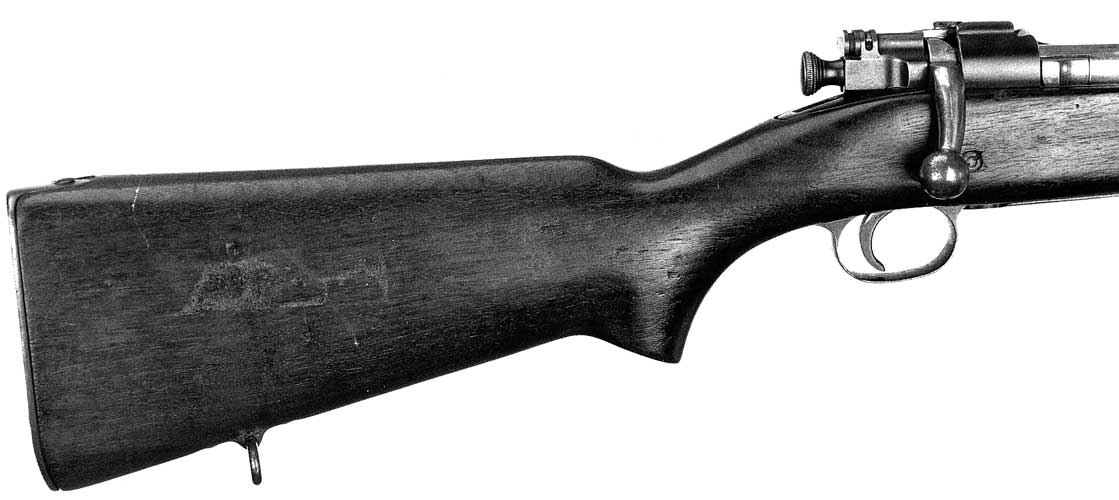
Q. I recently bought a Type S stock to backdate my C-stocked ’03 for a World War I living history impression. Sharing my plans with the seller, he warned me that I should first make sure I don’t have an M1903A1. What exactly is an M1903A1 Springfield? How do I tell?
A. In 1929, the Type C stock was adopted for use with the M1903 rifle. This stock differed from the Type S stock used on the M1903 service rifles up to this time primarily in the fact that the stock had a pistol grip and the grasping grooves were eliminated. The configuration and dimensions of the Type C Stock were also improvements over the Type S stock for most shooters. The Type C stock was initially utilized on National Match rifles beginning in 1929 and was so favorably received that the stock was approved for use with service rifles when the supply of available Type S stocks became exhausted.
Upon adoption of the Type C stock, the designation of the service rifle became Model of 1903A1. Production of service rifles during the 1920s and 1930s was limited, and relatively few pure M1903A1 rifles were manufactured. To qualify as such, in addition to the stock, a rifle would have to be of 1929 or later Springfield Armory production (in the corresponding serial number range) with an appropriately dated barrel. Original M1903A1 rifles were finished in the distinctive 1930s vintage black-tinted Parkerizing.

The original Springfield Armory Type C stocks were finely crafted and were stamped with a circled “P” proofmark on the grip and a final inspection stamp (cartouche) on the left side, slightly below the magazine cutoff recess. Several final inspection stamps may be encountered, including “dal” (for Springfield inspector Daniel A. Leary) and later, “sa/spg” (Springfield Armory/Stanley P. Gibbs). Both Leary and Gibbs were civilian inspectors who worked for Springfield Armory. Gibbs had been employed at Springfield since the First World War. A similar “sa/spg” inspection stamp will be found on early Springfield Armory M1 Garand rifles made prior to 1941.
Type C stocks were also made under subcontract during World War II, but these differed in several respects from the 1930s-vintage Type C stocks, primarily in the overall configuration. The finely crafted, pre-war Type C stocks were noticeably slimmer in profile than the World War II-vintage stocks of this type. The inspection stamping format will also help identify the earlier pre-war Type C stocks from the later World War II-contract variety. It should be noted that the standard Model of 1903 nomenclature on the receiver ring was retained on the M1903A1 variant, and the only substantive difference between the post-1929 rifles of this type and earlier M1903 rifles was the type of stock fitted.
There is some controversy today about exactly what constitutes a M1903A1 rifle. Apparently, the military considered any Springfield rifle fitted, even retrofitted, with a Type C stock as a M1903A1. Therefore, technically speaking, any M1903 rifle of any vintage fitted with a Type C stock can be classified as a M1903A1.
On the other hand, many collectors and students of the subject tend to take a more dogmatic approach and classify only those rifles made at Springfield Armory from 1929 until production ceased in the late 1930s, and equipped with the appropriate Type C stock, as true M1903A1s.
A true 1930s production M1903A1 service rifle is one of the rarest variants of the ’03 genre, and original examples are quite elusive. Many M1903 rifles of all vintages have subsequently been fitted with replacement Type C stocks during World War II (and later), but such assembled arms are infinitely more common and much less valuable than an original 1930s production M1903A1 service rifle.
—Bruce N. Canfield
Huh... guess I need to check mine...
ReplyDelete